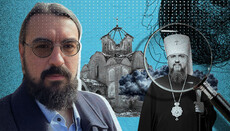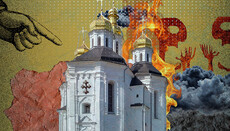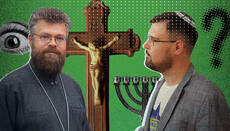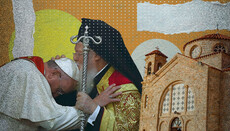What are Sister Churches?
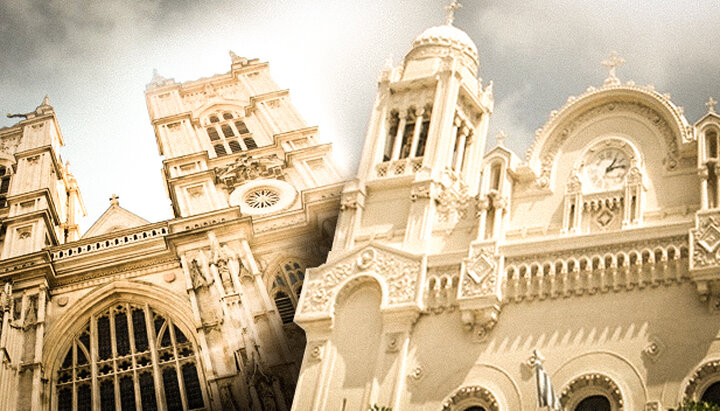
Ecumenism is advancing so vigorously that some Churches are now using the term “sister church” to refer to other faiths. Let's figure out what it is all about.
On October 10, 2021, at a meeting with the head of the Church of England, Archbishop Justin Welby of Canterbury, Patriarch Theodore of Alexandria said that the Orthodox and Anglicans are sister churches. Now it has become so trendy to use such collocations as "mother church", "daughter church", "sister church" that the original meaning of these terms seems to be lost.
The original meaning of the terms
For those wishing to explore this issue in more detail, we recommend the book: E. Lann "Sister-Church and Mother Church in the Understanding of the Ancient Church."
If we consider the era of the first three, or even more, centuries of Christianity, we will see that the term "Mother Church" meant exclusively the early Christian apostolic community in Jerusalem. There is a lot of evidence about this. For example, St. Irenaeus of Lyons in his book "Against Heresies" says the following about the Jerusalem Church: “Such are the voices of the Church, from which every Church originated; such are the voices of the metropolitanate of the citizens of the New Testament; such are the voices of the Apostles; such are the voices of the disciples of the Lord."
It’s noteworthy that we are talking specifically about the Jerusalem community, rather than about the Local Church of Jerusalem in our present understanding. In the first centuries, each Christian community was a local Church (for more details about the structure of the ancient Church, see the article "Of the origin of the Patriarchate of Constantinople"). It should also be noted that the Jerusalem Mother Church is a community of the first decades of Christianity, and not a longer time. After the destruction of Jerusalem in 70, the local Christians withdrew from the city, and when the community returned to Jerusalem a few decades later, it was already different both in its ethnic composition and in its significance in the Christian world.
The liturgical texts further narrow the term "mother church", reducing it to the Zion chamber, in which the condescension of the Holy Spirit on the apostles took place. "Rejoice, holy Zion, mother of the Churches, God's dwelling place, you are the first to receive absolution of sins by the Resurrection" (stichera, voice 8).
Accordingly, all other Christian communities that arose as a result of the apostolic preaching treated each other as “sister churches”. Indications hereby can be found in the New Testament; for example, the Apostle John the Theologian expresses himself this way about two Christian communities: “The children of your sister, who is chosen by God, send their greetings. Amen” (2 John 13). In later centuries, with the spread of the Church worldwide, with the emergence of episcopal districts, metropolises, and later patriarchates, the original meaning of these terms was subject to modification. The Christian community in a larger city, which was engaged in missionary work in nearby villages and founded communities there, became like a mother church in relation to them, and the latter communities became like sister churches among themselves. The interjection “like” was used here for a reason, because in the minds of Christians of that time, all these intercommunal relations, “church-mother, sister, daughter”, and so on did not matter much, but other factors were of more importance.
The embodiment of unity and the criterion of truth
If you ask the question who or what was the greatest authority in the ancient Church, the criterion of the adequate faith and the ultimate judge, then you can answer it as follows – it is the Holy Spirit Who descended in the upper room of Zion. Neither the Jerusalem community nor any of the apostles individually, nor the Roman or any other local Church was the yardstick of things, but only the Holy Spirit acting in Christians. It didn’t matter at all from whom exactly the communities in different cities received the gospel, which apostle or other preacher founded the community, etc. If the Holy Spirit descended on newly converted Christians, they became a community in no way inferior to any other.
Neither the Jerusalem community, nor any of the apostles individually, let alone the Roman or any other local Church was the yardstick of things, but only the Holy Spirit acting in Christians.
The holy Apostle Paul speaks about this with all clarity: “What, after all, is Apollos? And what is Paul? Only servants, through whom you came to believe – as the Lord has assigned to each his task. I planted the seed, Apollos watered it, but God has been making it grow. So neither the one who plants nor the one who waters is anything, but only God, who makes things grow” (1 Cor. 3: 5-7). The apostle says about himself that after his conversion, he did not ask the apostles to teach him the Christian faith or to authorize him to preach – he immediately began to preach Christ. “But when God, who set me apart from my mother’s womb and called me by his grace, was pleased to reveal his Son in me so that I might preach him among the Gentiles, my immediate response was not to consult any human being. I did not go up to Jerusalem to see those who were apostles before I was, but I went into Arabia. Later I returned to Damascus” (Gal. 1: 15-17).
Moreover, when the holy Apostle Peter committed something deplorable (from the point of view of the Apostle Paul), the apostle Paul did not hesitate to criticize him. “When Cephas came to Antioch, I opposed him to his face, because he stood condemned. For before certain men came from James, he used to eat with the Gentiles. But when they arrived, he began to draw back and separate himself from the Gentiles because he was afraid of those who belonged to the circumcision group. The other Jews joined him in his hypocrisy, so that by their hypocrisy even Barnabas was led astray. When I saw that they were not acting in line with the truth of the gospel, I said to Cephas in front of them all, “You are a Jew, yet you live like a Gentile and not like a Jew. How is it, then, that you force Gentiles to follow Jewish customs?" (Gal. 2: 11-14).
Likewise, the Apostle Paul says about himself that it is not he who has authority, but the Holy Spirit living in him. “But by the grace of God I am what I am, and his grace to me was not without effect. No, I worked harder than all of them — yet not I, but the grace of God that was with me” (1 Cor. 15:10).
Subsequent church monuments confirm this attitude to the issue of who is the criterion of truth. This is the Holy Spirit, which manifested itself in the confession of one true faith in Christ by people. All communities that held to this faith were apostolic, regardless of who founded them in the historical sense. For example, the ancient Christian writer Tertullian says that someone who cannot “attribute his foundation to some apostle or apostolic man, but arose much later, like those who arise daily, (let's say) that they all advance in a common faith and because of consanguinity they are considered apostolic."
The fact that the Lord Jesus Christ organized His Church without the presence of any visible authority or body with the highest authority is evidence of one interesting circumstance that not many people pay attention to. Before explaining it, let us turn to one well-known Athonite legend about the "invisible elders". The legend has it that 12 monks live on Mount Athos, who incessantly pray the Jesus Prayer, which is their only food. These monks are the guardians of Mount Athos and the most accomplished ascetics. When one of them dies, one of the inhabitants of the Holy Mountain takes his place, and thus the number 12 remains unchanged.
The idea to build a Church with a visible authoritative body suggests itself, viz. to elect another apostle to replace each departed from among the 12. Moreover, there was a precedent: Matthias was chosen by lot to replace Judas. However, God arranged the Church differently. Protopresbyter John Meyendorff writes: “As a ‘panel’, the Twelve historically cease to exist after the death of Jacob, and soon all of its members will also disappear. The task of the community will then be to preserve the apostolic testimony in its original purity and to continue – without living apostles – their missionary and pastoral ministry."
The idea that each community, each bishop, each (later) local Church could not simply inherit spiritual gifts from its predecessors, but had to establish its authority with its own faith and ascetic life was dominant in the ancient Church, although very early there appear those who want to assert their superiority by the apostolic origin or the administrative significance of the city itself. This approach was most prominently manifested among the Roman bishops, who very early began to speak of their exclusive privileges, basing their claims on the origin of the Roman Church from the Apostle Peter.
Very early there appear those who want to assert their superiority by the apostolic origin or the administrative significance of the city. This approach was most prominently manifested among the Roman bishops.
Without going into details, let's say that, firstly, the Apostle Peter never had special powers among other apostles, secondly, he was not a Roman bishop, and thirdly, historically, it is more likely that the Roman Christian community was founded by the apostle Paul. But (which is important) even if we accept the above assumptions, all the same, subsequent Roman bishops did not automatically inherit either the authority of the apostle or his spiritual gifts. Tertullian wrote about this back in the 3rd century: “Regarding your sentence, I wonder where you’ve got such a right in deciding church affairs? Who are you to subvert and change the self-evident intent of the Lord who personally communicated it to Peter? On you, he said, I will build My Church, and I will give you, not the Church, the keys, and you will loose or bind, rather than it will be loosed or bound.” The church historian V.V. Bolotov comments on these words as follows: “Thus, assuming that the ap. Peter occupied a state of emergency among the apostles, it is impossible to deduce from this the advantages of the Roman Church, since with the death of Peter these advantages, as Tertullian thinks, ended." Similar thoughts can be found among many Eastern hierarchs, who protested point-blank against the claims of the Roman bishop to the headship of the Church.
It is easy to see that something similar is happening today. Patriarch Bartholomew of Constantinople and many (if not all) of Constantinople hierarchs substantiate the adequacy of their actions, as well as their claims to an exclusive role in the Church in general, by the fact that the Church of Constantinople was founded by the Apostle Andrew the First-Called (a statement that appears only in the 4th century and has yet to be historically proven) and that it is the “mother church” for everyone else. At the same time, according to the Phanariots' logic, such factors as adherence to the canons of the Church, firmness in the confession of faith, personal piety and adherence to principles are secondary. Phanariots are trying to convince everyone that the expediency of all their decisions is due to the historical significance of the Church of Constantinople a thousand years ago, rather than due to religious considerations.
Phanariots are trying to convince everyone that the expediency of all their decisions is due to the historical significance of the Church of Constantinople a thousand years ago, rather than due to religious considerations.
Use of the term "sister churches" today
It should be noted that even at the end of the first millennium, the terms "mother church" and "sister church" were used in polemics between the Roman bishop and the Eastern patriarchs. The dispute boiled down to the position of the Roman Church in relation to other Local Churches: is it their "mother" or "sister"? This dispute continued by inertia for several centuries after the official falling away of the Roman Church in 1054. At that time, the idea that the breakaway was final had yet to be borne in the minds of Christians. Most of the Eastern hierarchs believed that it was possible to heal this schism and return to the former unity. Only after the brutal seizure and destruction of Constantinople by the crusaders in 1204 and the establishment of a Latin state with a Latin church hierarchy in Byzantium did it become obvious that a chasm lay between Catholics and Orthodox. From that time until the 20th century, it was hardly possible to come across the term “sister churches” by Orthodox or Catholic theologians, which would imply Orthodoxy and Catholicism.
In the 20th century, the term “sister churches” was first used by the famous ecumenist and protege of American President H. Truman, Patriarch Athenagoras of Constantinople, in his letter to Cardinal Augustine Bea in 1962. Pope John XXIII's replies also contained this term. This correspondence was soon published by Phanar. The publication was titled “Two Sisters”. Two years later, in 1964, the Second Vatican Council took place, at which the policy of openness and adaptation of Catholicism to current living conditions was approved. At this council, the Liberal Party won, which opened wide the doors to reforming Catholic worship, moral teaching and other spheres of church life, as well as ecumenism, first of all, with Orthodoxy and then other Christian denominations and not only. So in the decree of this Council "Unitatis Redintegratio" ("Restoration of unity") it was said: "... among the Eastern churches prevailed and continues to prevail an ardent desire to forever preserve the community of faith and charity, which is characteristic of the local Churches as sisters."
In the 20th century, the term “sister churches” was first used by the famous ecumenist Patriarch of Constantinople Athenagoras in a letter to Cardinal Augustine Bea in 1962. The replies of Pope John XXIII also contained this term.
Thereafter, the term "sister churches" began to be mentioned regularly both by the Patriarchate of Constantinople and by the Vatican as part of the ecumenical efforts of both sides. The papal encyclical "Ut unum sint" (1995) says that this term serves the cause of ecumenism: “More recently, the international commission has taken an important step forward in the matter of what should be the method used to restore full communion between the Catholic and Orthodox Churches. The Commission laid the groundwork for a positive solution to this issue with the doctrine of the Sister Churches."
However, in 2000, a group of Vatican cardinals, supporters of the conservative point of view, attempted to defend the original Catholic self-positioning as the only “mother church” for all other Christians, no matter what denominations they belong to. In June 2000, the Congregation for the Doctrine of the Faith, under the leadership of Cardinal Joseph Ratzinger (future Pope Benedict XVI), drew up a Note on the Expression of Sister Churches, which provides a deep historical and theological analysis of the term “sister churches” and offers a conclusion that the use of this term should be minimized, and it is better to stop using it altogether, since the Vatican is not a “sister”, but a “mother” for everyone else.
“In reality, in the true sense of the word, ‘Sister Churches’ are only local Churches (or groups of local Churches, as exemplified by the Patriarchates or Metropolises) among themselves. If the expression “Sister Churches” is used in this true sense, then there will always be clarity that the Holy Catholic Apostolic Church is not a sister, but the mother of all local Churches,” the document says. The "Note" was originally intended purely for internal use and was not published officially, but over time it became available for review.
As you know, the conservative Pope Benedict XVI was forced to abdicate, and the liberal Francis was put in his place, under whose primacy the cause of the unification of the Vatican with Phanar was accelerated by leaps and bounds.
Orthodox understanding of the situation
In 2008, the document "Basic principles of the attitude of the Russian Orthodox Church to non-Orthodoxy" was adopted at the Council of Bishops of the Russian Orthodox Church, in which the ecumenical theory of "sister churches" was rejected and the identity of the Church of Christ and the Orthodox Church was reaffirmed.
“The Orthodox Church is the true Church of Christ, created by our Lord and Savior Himself, the Church confirmed and filled with the Holy Spirit, the Church about which the Savior Himself said, “And I tell you that you are Peter, and on this rock I will build my church, and the gates of Hades will not overcome it” (Matthew 16:18). She is the One, Holy, Conciliar (Catholic) and Apostolic Church, the keeper and giver of the Holy Sacraments throughout the world, “the pillar and foundation of the truth” (1 Tim. 3: 15) (Para. 1.1.).
In 2008, at the Council of Bishops of the Russian Orthodox Church, the ecumenical theory of “sister churches” was rejected and the identity of the Church of Christ and the Orthodox Church was reaffirmed.
All other Christian denominations arose as a result of falling away from the Orthodox Church: “Throughout Christian history, not only individual Christians, but also entire Christian communities were separated from unity with the Orthodox Church. Some of them have disappeared in the course of history, while others have survived through the centuries. The most significant divisions of the first millennium, which have survived to this day, occurred after the rejection of the decisions of the III and IV Ecumenical Councils by part of the Christian communities, as a result, there is the Assyrian Church of the East, which still exist today, the pre-Chalcedonian Churches – Coptic, Armenian, Syro-Jacobite, Ethiopian, Malabar. In the second millennium, the separation of the Roman Church was followed by the internal divisions of Western Christianity associated with the Reformation, which eventuated in an incessant process of the emergence of many Christian denominations that were not in communion with the Roman See. Separations also arose from unity with the Local Orthodox Churches, including the Russian Orthodox Church” (Para. 1.13.).
The reasons for these schisms are heresies and delusions: “Delusions and heresies are the result of selfish self-assertion and isolation. Any schism leads to a certain degree of rupture with the ecclesiastic plenitude. Division, even if it occurs for non-doctrinal reasons, is a violation of the doctrine of the Church and ultimately leads to distortions in the faith" (Para. 1.14.).
Saying that the Orthodox Church must do everything in order to restore the unity of all confessions calling themselves Christian, the document of the ROC rejects any compromises: “However, recognizing the need to restore the broken Christian unity, the Orthodox Church claims that true unity is possible only in the bosom of One Holy Catholic and Apostolic Church. All other ‘models’ of unity seem unacceptable” (Section 2.3.). Further, in the appropriate section, a description of these models is given and the idea is reiterated that the Orthodox Church rejects them.
And what is very important, the document speaks of the exclusiveness of the Orthodox Church as a ship of salvation: "The Orthodox Church affirms by the mouth of the holy fathers that salvation can be found only in the Church of Christ" (Para. 1.15.).
However, if we turn to a similar document of the Crete Council of 2016, which was organized by the Patriarchate of Constantinople and did not acquire pan-Orthodox status due to the fact that four most numerous Local Churches did not attend it, we will see that there is no so much clarity and unambiguity in the definition of the Church, but there are prerequisites for further progress along the path of ecumenism, primarily with Catholicism. This document is called: "Relations of the Orthodox Church with the rest of the Christian world" and its first paragraph states: "The Orthodox Church, being the One, Holy, Catholic and Apostolic Church, firmly believes in deep ecclesiastical consciousness that it occupies centre stage in promoting Christian unity in modern world." Further, almost every paragraph says it is necessary to strive with all its might for unity and that the Orthodox Church is conducting “modern bilateral theological dialogues” on this matter and not only bilateral ones. The document of the Cretan Council never states that only the Orthodox Church is the Church of Christ, there is no mention of the fact that all the parts that broke away from Her must return through repentance for their delusions, and there is no rejection of those compromise "models" of unity that were repudiated in the above document of the Russian Orthodox Church.
There is an indication in the document of the Council of Crete that not only Orthodoxy, but also other Christian denominations can be called by the term “churches”.
Nevertheless, there is an indication in the document of the Council of Crete that not only Orthodoxy, but also other Christian denominations can be called the term “churches”. Thus, paragraph 6 of the Cretan document reads: “The unity that the Church possesses by its ontological nature cannot be violated. Nevertheless, the Orthodox Church recognizes the historical name of other non-Orthodox Christian churches and confessions that are not in communion with Her, and at the same time believes that Her relationship with them should be based on the earliest and more objective learning by them of all ecclesiological issues, notably in the field of doctrine about the sacraments, grace, priesthood and apostolic succession in general.” However, there is a big difference between "learning the subject" and "repentance".
Even at the stage of its preparation, prominent hierarchs, including those from the Greek Churches, protested against this provision, as well as against the entire ecumenical ideology of the Cretan Document. Thus, the famous preacher and missionary, Metropolitan Athanasios of Limassol, addressed a letter to the Holy Synod of the Cypriot Church, in which he stated: “I believe that applying the name ‘Church’ to heretical or schismatic communities is absolutely wrong both theologically, dogmatically and canonically, because there is one Church of Christ.” He also stated that “the text does not mention at all that the only path that leads to unity with the Church is the path of the return of heretics and schismatics through repentance into the bosom of the One, Holy, Catholic and Apostolic Church, which, as noted in paragraph 1, is our Orthodox Church."
Vladyka did not confine himself to criticizing the document being prepared, but suggested his own versions of some formulations: “Regarding para 4, I make the following remark: I believe that 'the Orthodox Church, incessantly praying ‘for the unification of all’,” means the return and our unity with all those who cut themselves off and moved away from it – heretics and schismatics, who leave it and return through repentance. The Orthodox Church of Christ has never destroyed ‘the union of faith and the communion of the Holy Spirit’ and does not accept the theory of the restoration of the unity of ‘those who believe in Christ’, since it believes that the unity of believers in Christ already exists in the unity of all Her baptized children among themselves and with Christ in our true faith, which heretics and schismatics do not have. And so the Church prays for repentance and their return to Orthodoxy."
However, the Council of Crete did not consider it necessary to accept the proposals of Metropolitan Athanasios, which testifies to its overall ecumenical vector, which was exactly targeted by its organizer, the Patriarchate of Constantinople.
In order to preserve the purity of the Orthodox Faith, it is vitally important to abandon the policy of ecumenism, and hence the ecumenical theory of "sister churches" in relation to various Christian denominations.
Conclusions
Firstly, in order to preserve the purity of the Orthodox Faith, it is vitally important to abandon the policy of ecumenism, and, consequently, the ecumenical theory of “sister churches” in relation to various Christian denominations. Perhaps it is permissible to use this term with regard to the Local Orthodox Churches in their relations with each other, but one had better not use it altogether, since it has a pronounced ecumenical connotation.
Secondly, the clarification of relations between Local Orthodox Churches and even more so between heterodox denominations, attempts to designate these relations with the terms "mother", "sister" and so on is a dead-end path. It is much more expedient both for each Local Church and for each Christian community (incidentally, for each Christian as well) to approach God through faithfulness to Orthodox dogmas, fulfillment of God's commandments, and spiritual work commanded by the holy fathers. If this be so, harmonious relations between Local Churches will start to improve by themselves, and heterodox communities will inevitably come to the idea of the need for repentance and return to the bosom of the Church.
